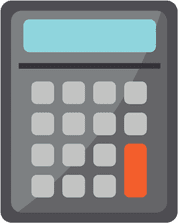In my previous article, we learned about the main 3 indicators to determine if an apartment building (or commercial real estate in general) is a good deal: the cap rate, the cash on cash return, and the debt service coverage ratio (DSCR).
These indicators are extremely valuable, but they oversimplify the process of accurately evaluating apartment building deals, especially when they are “value-add” deals. And I tend to look for value-add deals because that's how we can build the most wealth in the shortest period of time.
The Ultimate Indicator: The Average Annual Return
The Average Annual Return (or “AAR”) takes into consideration the three ways apartment buildings can make money:
- Cash Flow: how much cash the building is throwing off each month,
- Appreciation: how much the building’s value has increased, and
- Amortization: how much the tenants have paid down the mortgage.
For the purposes of our discussion, we’ll define “equity” as the sum of appreciation and amortization.
To calculate the AAR, you add up all three of these “profit centers,” divide it by the number of years you held the investment, and divide that by the amount of cash invested.
Requirements For a Good Financial Model to Calculate the AAR
You’ll need a financial model that can create an accurate 10-year profit and loss projection, including your value-add plan for increasing rents or decreasing expenses. It should incorporate your assumptions for buying and disposing the asset. It needs to include other expenses like closing costs, repairs, and any kind of syndicator fees. It should also be able to model a cash-out refinance since many value-add deals involve a refinance and hold exit strategy. And if you have investors, it should calculate the returns for them and incorporate any syndication fees for you.
You can create this spreadsheet yourself or you can buy one. If you buy one, make sure you can edit and customize it because otherwise it will quickly get frustrating if you can’t make it do what you want it to.
Just Google “syndicated deal analyzer”.
For some recommendations on a multifamily deal analyzer spreadsheet, I’m going to use mine to demonstrate the process …
Here’s an example (we’ll keep the numbers simple):
- Acquisition Price: $500,000
- Cash Invested for Down Payment, Repairs, and Closing Costs: $150,000
- Loan Amount: $350,000.
- Average Annual Cash Flow: $10,000
After 5 years, you sell the property for a net sales price of $600,000. This is a $100,000 profit after covering your sales costs. Here is a summary of our profit centers:
- (1) Cash Flow = $10,000 x 5 years = $50,000
- (2) Equity/Profit = $100,000 (Note that of the $100K in equity, about $40,000 is from amortization and the rest is from appreciation).
- Total Return Over 5 Years = (1) + (2) = $150,000
- Average Annual Return = Total Return/5 Years/Cash Invested = $150,000/5/$150,000 = 20%
This means that in this example, your average annual return was 20%, which means you doubled your invested cash in 5 years.
By the way, please forgive me for oversimplifying and generously rounding these numbers. My point is not so much to be accurate but to show you the process.
Is This a Good Deal?
That depends. It depends on you and your expectation for a “good” return. Some people LOVE the idea of a 20% return, others won’t get out of bed for anything higher. Also, if you have investors in the deal, then you have to make sure they are getting their return and there’s still enough leftover to get you paid as the syndicator.
What About the Internal Rate of Return (IRR)?
Some of you may say that the IRR is a more accurate measure of a return, and it is. While the IRR is more “correct,” it’s also more complex. I’ve found that when I use the IRR with the average investor, their eyes glaze over. And what does a confused mind say? That’s right, it says “NO!” By all means, use it with your sophisticated investors, but stay away from it when talking with the average investor.
Conclusion
While the 3 key indicators are a great start for understanding how to value commercial real estate, the ultimate key indicator is the average annual return. Get yourself a good financial model to calculate the average annual return for a value-add apartment building, and you’ll be able to quickly determine whether it’s a good deal.
Thanks very much for reading, and I hope you found it helpful. ‘Til next time!
Investors: How do you evaluate your apartment deals?
